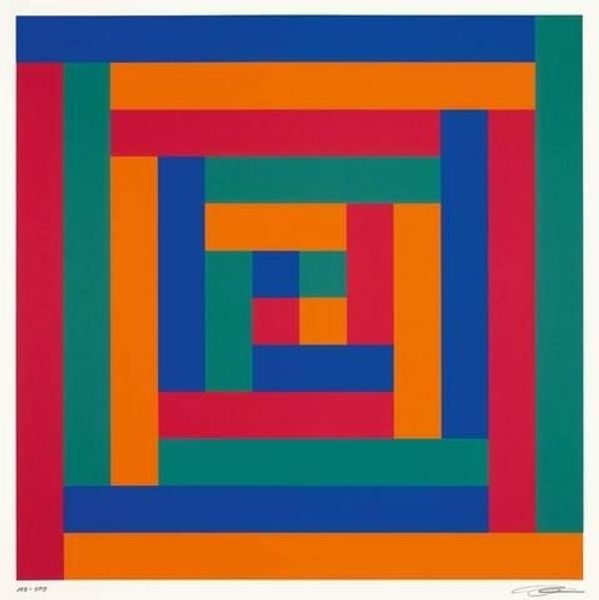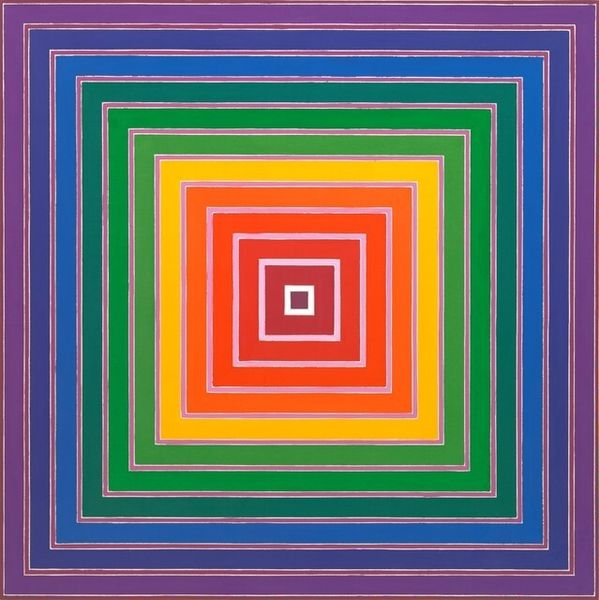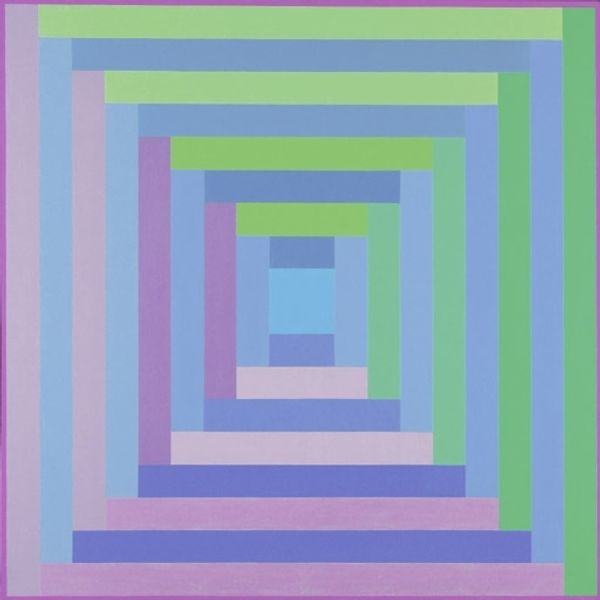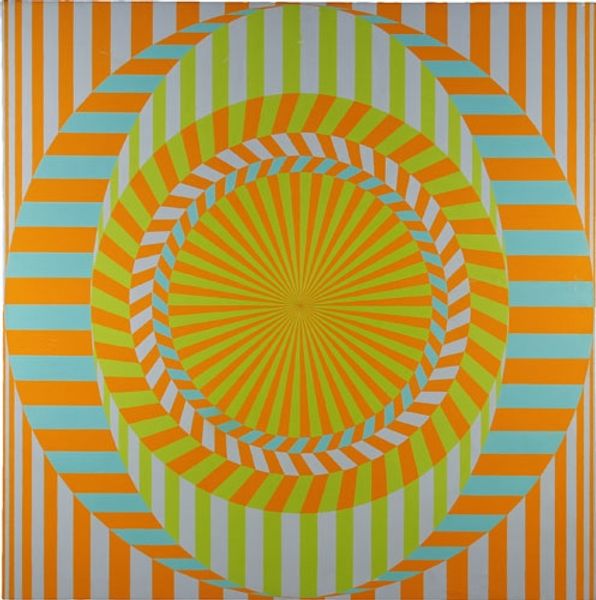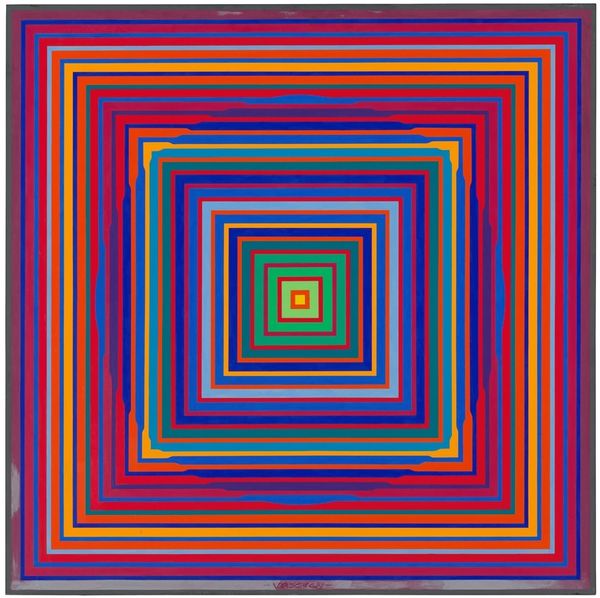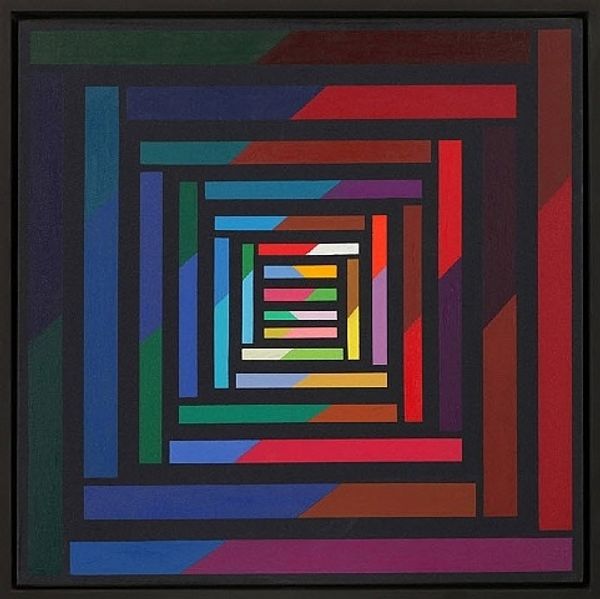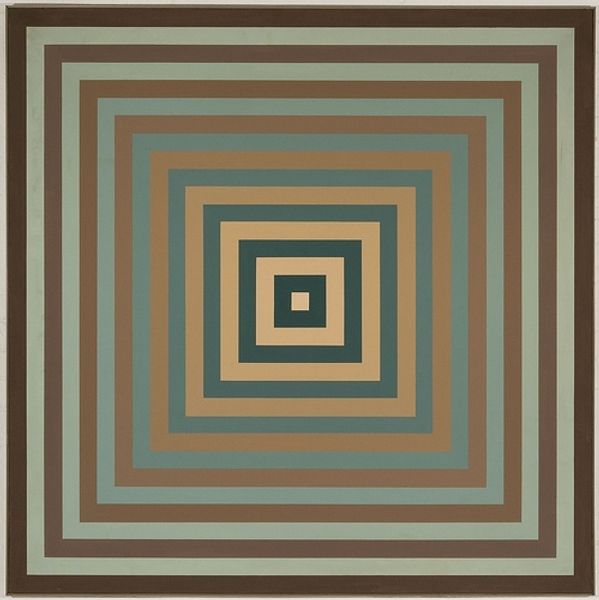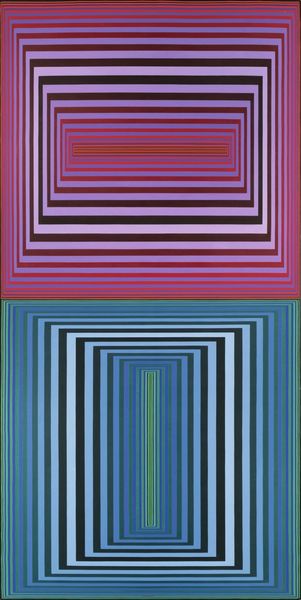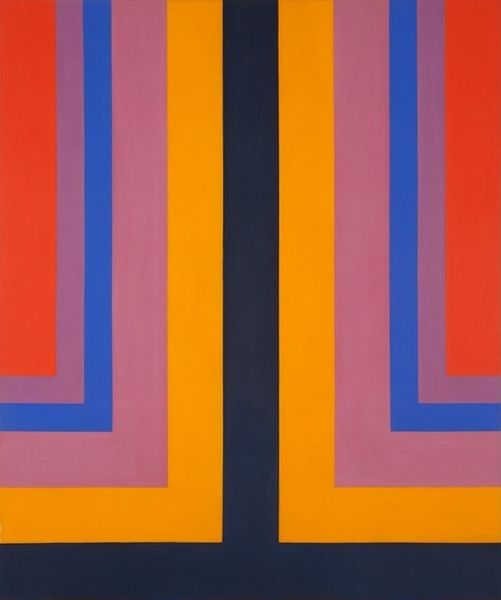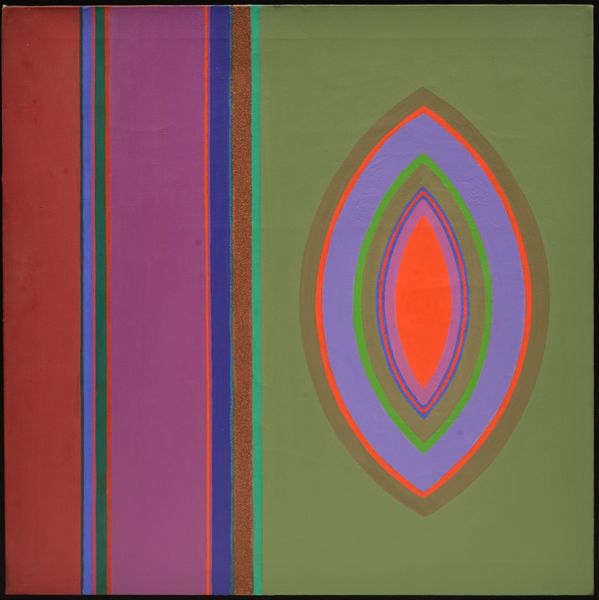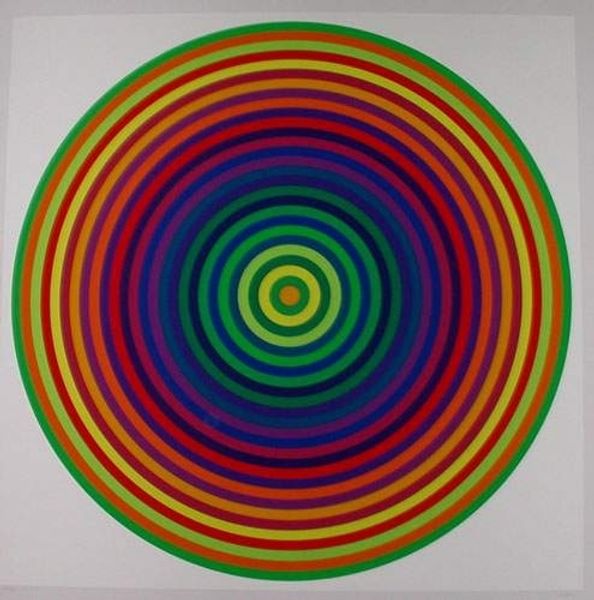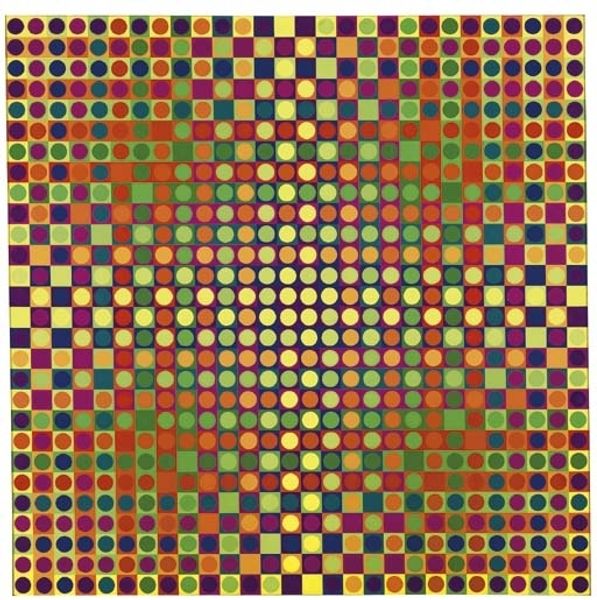
acrylic-paint
#
op-art
#
acrylic-paint
#
rectangle
#
geometric
#
vertical pattern
#
abstraction
#
line
Dimensions: 200 x 200 cm
Copyright: Victor Vasarely,Fair Use
Curator: This is "Vonal Stri," a piece created by Victor Vasarely in 1975. The medium is acrylic paint, and it is exemplary of the Op Art movement, known for its use of geometric forms. Editor: My first thought is a retro portal to another dimension, maybe a game from the 70's, like, I'm about to be sucked into a pixelated world! Curator: Vasarely, deeply interested in how we perceive art, used color and form to create illusions. Op Art in general challenged the tradition of painting as a mere representation of reality, turning it into an active experience. Editor: The craftsmanship is key to why it succeeds; any minor slip-up in the meticulous construction would totally break the spell. Did he have a whole team helping him create these mesmerizing repetitions, or was it solitary, meditative labor? Curator: Archival evidence shows that Vasarely relied on a system of industrial production. He employed assistants to execute his designs precisely, almost like a factory assembling parts. This approach raises the question: does it affect its status as a "high art"? What do we value more—the idea, or the hand? Editor: It blurs those categories! The concept's so precise, the execution needs to be equally flawless. I’m also pondering how our perception is affected by mass production and consumer culture. Like, is he commenting on it? Is that what makes it 'pop'? Curator: Indeed! "Vonal Stri" is, in a way, a commentary on consumerism. Op Art was intentionally designed to be accessible, to visually 'pop'. It often incorporated bold color palettes inspired by the commercial aesthetics, and also accessible via silkscreen prints and other methods that allowed for greater distribution, and lower costs. Editor: Looking at those earthy greens and blues fading towards the center… it almost subverts that commercial glossiness by evoking nature through abstraction. It becomes this hypnotic invitation to quiet contemplation—a very physical encounter. Curator: Right. Thinking about Op Art means challenging traditional divisions, isn't it? And Vasarely compels us to think of how technology and industrial processes are implicated in even our most private aesthetic experiences. Editor: It definitely challenges our easy categorization, and that's why it stays interesting. All this repetition makes it unique!
Comments
No comments
Be the first to comment and join the conversation on the ultimate creative platform.
